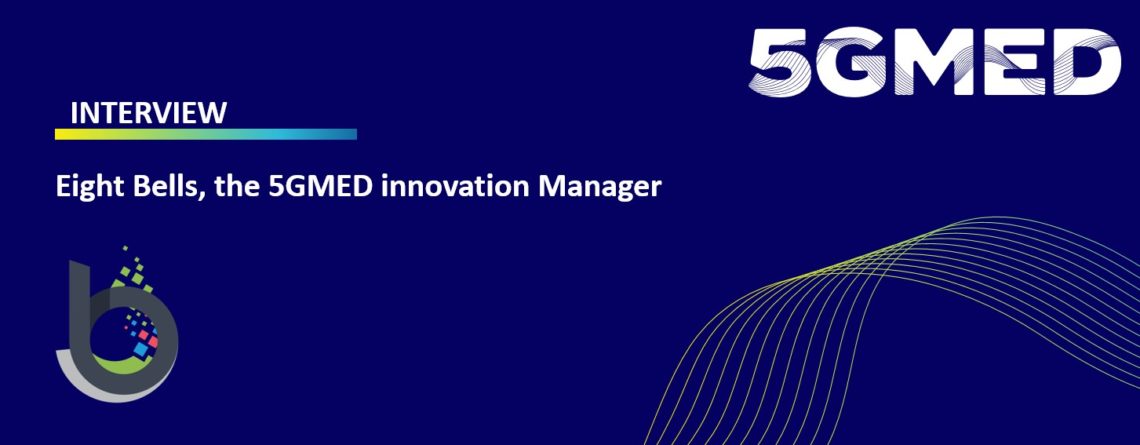Eight Bells, 5GMED Innovation Manager
Eight Bells is an independent Research and Consulting company specializing in selected parts of Information and Communication Technologies (ICT) as well as in modelling and analysis for businesses, based in Nicosia, Cyprus and Athens, Greece. The company was established in 2016 by ICT researchers and market analysts pursuing the application of their research expertise and innovations in the ICT related arena.
How do you describe your role in the 5Gmed project?
Our role in 5GMED is Innovation Management, making sure that the ambitious technological achievements of the project can be fully exploited towards the targets we have set. Our vision is to enable cross-border 5G deployments across Europe that will unlock innovative products and services for drivers and passengers. To achieve this, we need to go beyond the traditional business models of telecommunications providers and come up with new, co-operative models that bring together network operators, road/railway operators and vehicle manufacturers and other stakeholders. We are also pushing towards the needed evolution of regulatory frameworks along with Telecom authorities and Standardisation bodies.
Why 5G is not the typical evolution seen with previous generations?
5G goes beyond just a speed upgrade, introducing low latency for near-real time applications and the ability to simultaneously connect a massive number of devices. But what does this mean for society? Will there be any real benefit for our everyday lives? The answer is a resounding YES. Up to now, mobile networks have been serving mainly one (admittedly essential) human need and that is personal communication. The new products and services enabled by 5G will go beyond that by contributing to the areas of health and well-being, safety, sustainable manufacturing and food production to name a few. 5G will accelerate the shift to autonomous vehicles and intelligent traffic management, practically eliminating fatal accidents and frustrating congestions. Hospitals and doctors will be able to remotely diagnose and treat patients and even perform surgeries. An abundance of air quality sensors and air cleaning devices will ensure a healthy indoor and outdoor environment for city inhabitants. Agriculture and industrial specific sensors and data analytics will shift our production practices towards a more sustainable paradigm. These are only a few examples and a glimpse of what is possible with 5G. What lies ahead is a new era for humanity, a new industrial revolution that is truly human-centric and 5G is the core driving force behind it.
Can you explain the impact of the project in short term and long term?
5GMED’s goal is to validate the latest version of 5G technologies in the context of Cooperative, Connected and Automated Mobility (CCAM) and Future Railway Mobile Communication Systems (FRMCS) and provide sustainable business models for the deployment of the new infrastructure and services. For this, we envision new synergies between roads, railways and telecom providers that are going to shift the current status and make these deployments sustainable and easy to replicate and scale across Europe. As a result, in the long run, these new technologies and models are expected to have a major societal and environmental impact promoting road safety, transport system efficiency, travel comfort and social inclusion by ensuring mobility for all.
Can you present the car of the future?
Automated driving is the main characteristic of the car of the future. Modern cars already feature some level of autonomy with technologies like adaptive cruise control and lane-keeping assistance. Companies like Tesla already implement higher levels of autonomy but still require the driver’s attention. In the near future cars are expected to be completely autonomous, not needing any input or supervision from the driver (in fact the notion of a driver or human operator will become obsolete altogether) thus totally eliminating the human error factor. But automation alone is not enough. What we need also is connectivity among cars and between cars – infrastructure (roads) exchanging information about traffic, weather, road conditions, potential hazards etc., as well as safety fallback features where for example in case of failure a human operator can remotely guide the vehicle to a safe spot. This combination is what will allow maximum benefits, from the elimination of accidents to intelligent traffic management. So, in short, the car of the future will be both fully automated and connected.
How does this project contribute to cross-border collaboration between countries and institutions?
A cross-border 5G deployment on a scale as large as the one explored in 5GMED poses significant challenges both from a technology and a business standpoint. In our project, we are designing and evaluating new models of collaboration between countries, telecommunications providers, road and rail operators that are needed to achieve this ambitious vision. From our early results, we have seen that co-operative business models based on shared infrastructure are absolutely essential to keep the cost of deployment under control. In this context, 5GMED is in a unique position to study the collaborative potential between roads and railways, an aspect that has not been previously explored. We are also looking into the required standards, regulations and policies (in Europe and internationally) that will need to be updated in order to enable the cross-border connectivity scenarios. Some crucial aspects that need to be considered in these scenarios are sufficient cellular radio coverage, a seamless collaboration between MNOs of neighbouring countries and maintaining service continuity (Quality of Service).
Do not miss our next interview, follow us on our social media for more.


